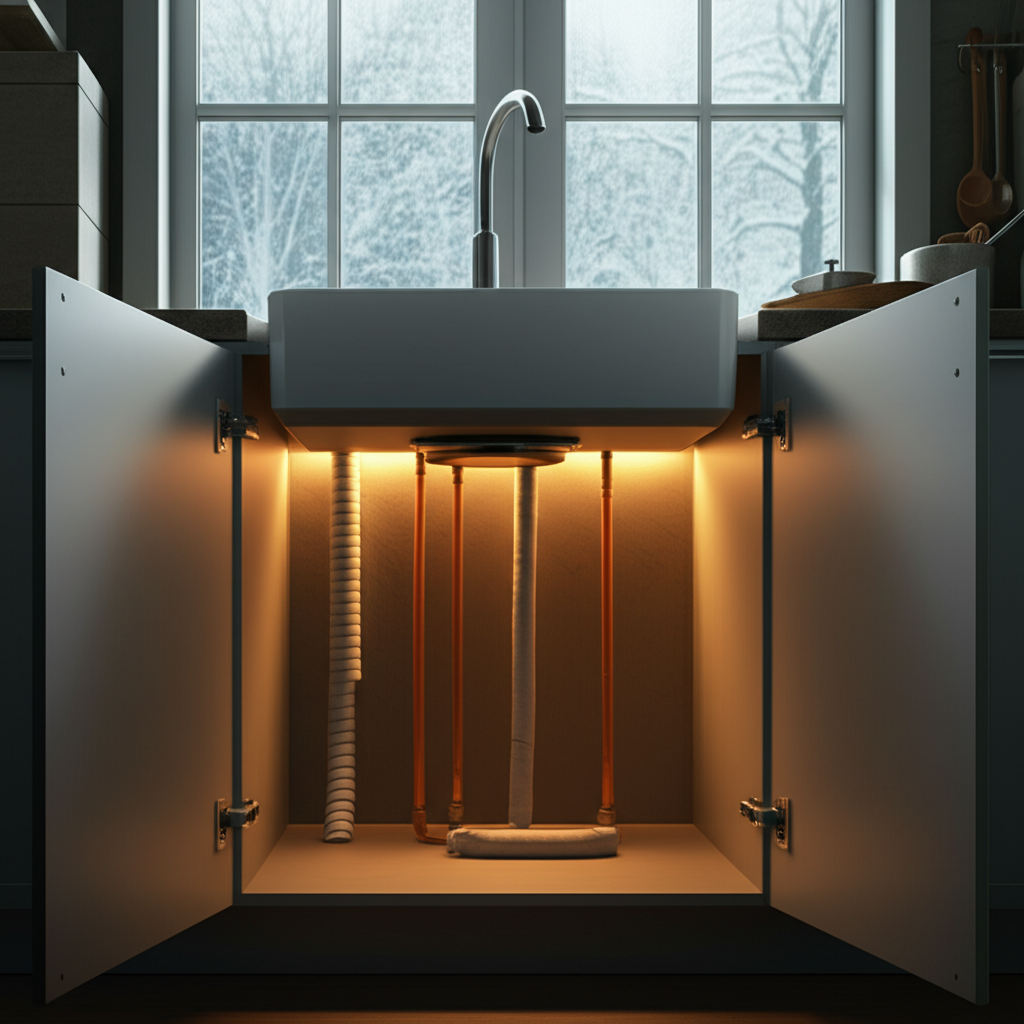Winter is coming, and with it, the dreaded threat of frozen pipes. The thought of burst pipes, flooding, and a huge plumbing bill is enough to send shivers down anyone's spine. But what if I told you there's a ridiculously simple, 30-second hack that could save you from this plumbing nightmare? Yes, you read that right. Just 30 seconds!
This isn’t some complicated DIY project requiring specialized tools. This is a quick and easy preventative measure that anyone can do, regardless of their plumbing expertise. Let's dive in and learn how to protect your home and wallet this winter.
Why Are My Pipes Freezing in the First Place?
Frozen pipes are a common winter woe. But what exactly causes them? The answer is simple: when temperatures drop below freezing (0°C or 32°F), the water inside your pipes can freeze.
The Science Behind the Freeze
Water expands when it freezes. This expansion creates immense pressure inside the pipes. If the pressure becomes too great, the pipe can burst, leading to significant water damage and costly repairs.
Where Are My Pipes Most Vulnerable?
Pipes located in unheated areas of your home are most at risk. These areas include:
- Exterior walls
- Attics
- Basements
- Crawl spaces
- Kitchen and bathroom cabinets (a key area for our 30-second hack!)
What is This Magical 30-Second Hack?
Okay, enough suspense. The 30-second hack involves simply opening the cabinet doors under your kitchen and bathroom sinks.
Why Does Opening Cabinet Doors Help?
"Being behind closed doors, kitchen plumbing frozen pipes are vulnerable, as the heat from the rest of the house can’t reach them," explains plumbing expert. By opening the cabinet doors, you allow warm air to circulate around the pipes, preventing them from freezing.
This simple act allows ambient heat from the rest of your home to reach those vulnerable pipes, significantly reducing the risk of freezing.
Beyond the Cabinets: Other Pipe-Protecting Strategies
While the 30-second hack is a great starting point, it's not the only way to protect your pipes from freezing. Here are some additional strategies:
- Insulate Your Pipes: Pipe insulation sleeves are inexpensive and easy to install. Focus on insulating pipes in unheated areas.
- Let Faucets Drip: When temperatures are expected to drop significantly, let faucets drip cold water slowly. The continuous movement of water helps prevent freezing.
- Seal Cracks and Openings: Seal any cracks or openings in your home's foundation or walls to prevent cold air from entering.
- Keep the Thermostat Consistent: Avoid drastically lowering the thermostat when you're away. Maintaining a consistent temperature helps prevent pipes from freezing.
- Consider a Space Heater: In particularly cold areas, a small space heater can provide extra warmth to vulnerable pipes. Be sure to use space heaters safely and follow manufacturer instructions.
What if My Pipes Are Already Frozen?
If you suspect your pipes are frozen, act quickly:
- Turn off the Water Supply: Locate the main water shut-off valve and turn it off to prevent further damage if a pipe bursts.
- Call a Plumber: It's best to call a qualified plumber to thaw frozen pipes safely. Attempting to thaw them yourself can be dangerous and could damage the pipes.
- Apply Heat (Cautiously): If you're comfortable doing so, you can try to thaw the pipes yourself using a hairdryer or a heat lamp. Never use an open flame. Start by applying heat to the pipe closest to the faucet and work your way back.
Frequently Asked Questions
Q: Will this 30-second hack work in sub-zero temperatures? A: It's a helpful preventative measure, but in extremely cold temperatures, you'll need to combine it with other strategies like dripping faucets and insulating pipes.
Q: How do I know if my pipes are frozen? A: Reduced water flow from your faucets is a common sign. You might also see frost on the pipes.
Q: Is it cheaper to leave my heating on all the time? A: Energy experts generally advise against leaving your heating on all the time. It's more efficient to use a timer or programmer to heat your home only when you're there.
Don't Wait Until It's Too Late!
Protecting your pipes from freezing is essential for preventing costly damage and headaches this winter. Implement this 30-second hack today, along with other preventative measures, to ensure a worry-free winter. Take action now and avoid the plumbing nightmare!

